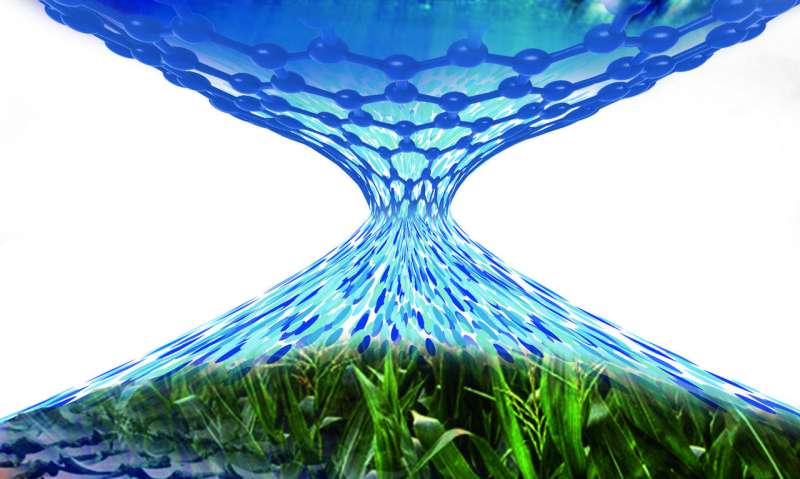June 14, 2019 report
Using carbon nanotubes to strengthen graphene-based membranes used for desalination

A team of researchers from China, the U.S. and Japan has developed a way to strengthen graphene-based membranes intended for use in desalination projects—by fortifying them with nanotubes. In their paper published in the journal Science, the group describes how they created their fortified membranes and how well the membranes worked when tested. Baoxia Mi, with the University of California, has published a Perspective piece on the work by the team in the same journal issue.
As time passes and the human population grows, access to water becomes more of a serious problem for many people around the world. To address the problem, scientists have been putting a lot of effort into creating better water filtration systems to remove salt from water. Part of this effort has focused on finding better filters. One idea is to use a graphene membrane; prior research has shown that it would be faster and more efficient than current materials. But graphene sheets are also prone to defects and damage if struck by objects in the water, and they deteriorate quickly under the constant flow of water. In this new effort, the researchers have found a way to improve the strength of graphene-based membranes by using carbon nanotubes.
Prior research had shown that graphene-based membranes are more likely to have defects and are more prone to damage as their surface area increases. To get around that problem, the researchers created small cells of graphene nanomesh connected and held together by single-walled carbon nanotubes. The result was a centimeter-sized mesh with a honeycomb appearance—one that was large enough to test as a membrane in a filtration system. The researchers report that testing showed their membrane to be highly efficient, and just as important, less prone to damage migration—if damage occurred to the mesh in one of the cells, it was constrained to that cell alone.
The researchers claim that their technique could be used to produce membranes large enough for commercial applications. Mi points out, however, that despite the good work done by the team in creating the membrane, more work is required before graphene can be used in any kind of real-world application.
More information: Yanbing Yang et al. Large-area graphene-nanomesh/carbon-nanotube hybrid membranes for ionic and molecular nanofiltration, Science (2019). DOI: 10.1126/science.aau5321
Journal information: Science
© 2019 Science X Network



















